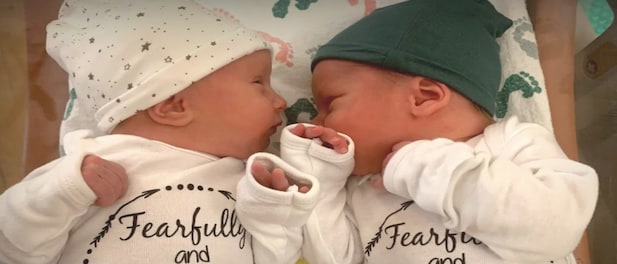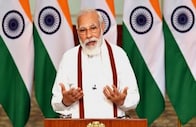A robot, developed in Barcelona and shipped to New York City, autonomously penetrated the egg and dropped off a single sperm cell, fertilising more than a dozen eggs in the process. The development has been heralded as a step towards automating in vitro fertilisation (IVF) and making the procedure more common and affordable.
A ground-breaking development in fertility medicine has been made as the first babies conceived with a sperm-injecting robot have been born. A special robot developed by engineers in Barcelona was shipped to a clinic in New York City, named New Hope Fertility Center, where the entire fertilisation process was carried out, according to the MIT Technology Review.
The robot autonomously penetrated the egg and dropped off a single sperm cell, fertilising more than a dozen eggs in the process. The resulting healthy embryos have led to the birth of two baby girls, who are the first people born after fertilisation by a robot, the MIT Technology Review stated.
The development has been heralded as a step towards automating in vitro fertilisation (IVF) and potentially making the procedure more common and affordable. IVF labs currently require expensive and trained embryologists who delicately handle sperm and eggs using ultra-thin hollow needles under a microscope.
ALSO READ | Modern urban lifestyle a shot in the arm for IVF industry — but is infertility treatment all good?
Startups such as Overture Life have filed patent applications for miniature ‘biochips’ complete with hidden reservoirs containing growth fluids and tiny channels for sperm to move through. According to the report, Overture’s Chief Innovation Officer Santiago Munné believes that if IVF could be carried out inside a desktop instrument, patients might not have to visit specialised clinics, which can cost $20,000 per attempt in the US. Munné said if any doctor could do it, the process could become cheaper, the report added.
The main objective of automating IVF is to make the process more widely available, as only 5,00,000 children are born through IVF globally each year. Most people who require fertility assistance do not have access to fertility medicine or cannot afford it. The automation of certain aspects of IVF, such as injecting sperm, freezing eggs, or nurturing embryos, could eventually lead to radical innovations, such as gene editing or artificial wombs.
Despite the significant development, it is not yet possible to fully automate IVF, and some doctors remain sceptical about the prospect of robots replacing embryologists anytime soon.
Gianpiero Palermo, a fertility doctor at Weill Cornell Medical Center, is credited with developing the fertilisation procedure known as intracytoplasmic sperm injection, or ICSI, in the 1990s. Palermo believes that while the concept is extraordinary, Overture's robot still relies on some manual assistance, making it "not yet a robotic ICSI.” Zev Williams, Director of Columbia University's fertility clinic, agrees that humans are still far better than a machine at handling delicate procedures, according to the MIT Technology Review report.
One obstacle in automating conception is that microfluidics, or lab-on-a-chip technology, has not yet lived up to its hype. However, Overture’s development has opened up new possibilities for the field. Jeremy Thompson, an embryologist based in Adelaide, Australia, believes that developing ‘micro cradles’ for embryos could be the next step in automation. These cradles would create a stable environment for embryos to grow in, helping to improve IVF success rates.







